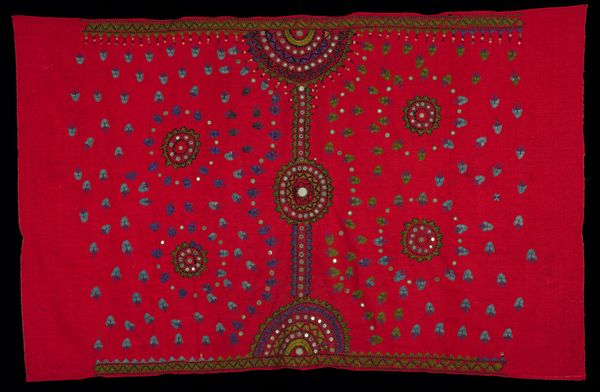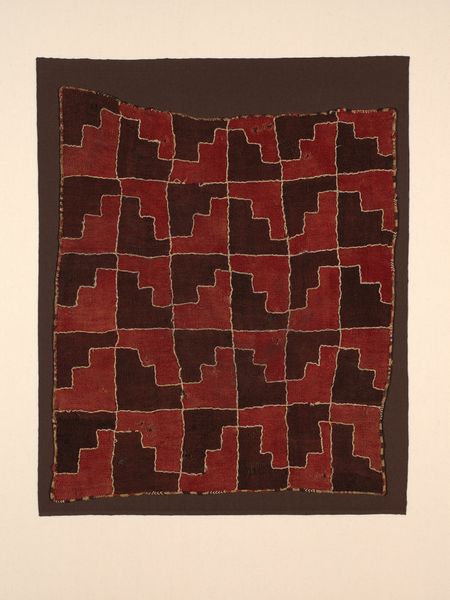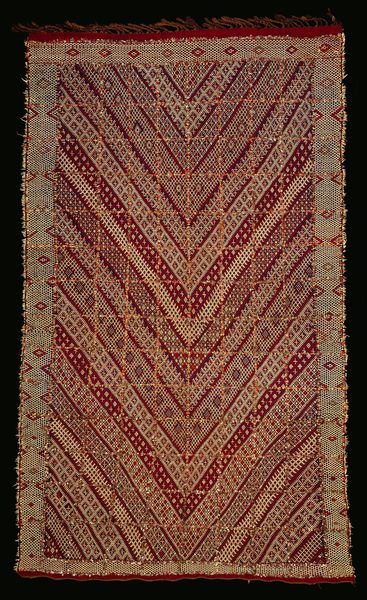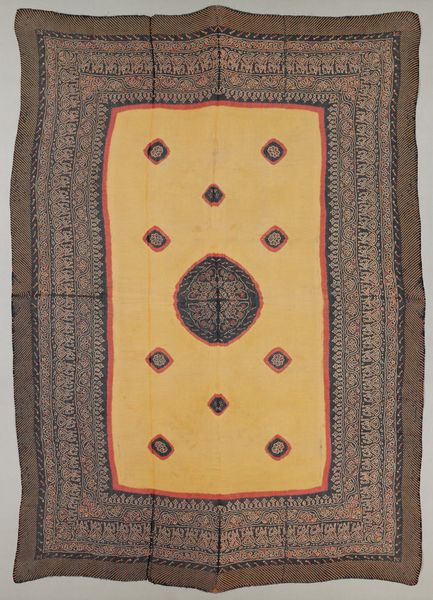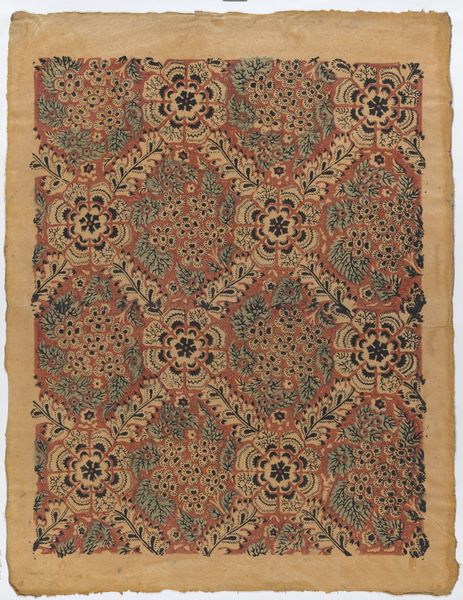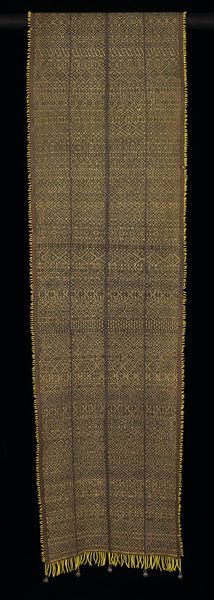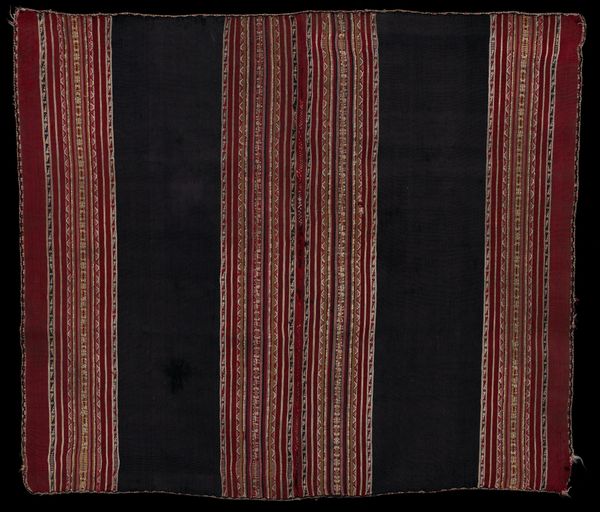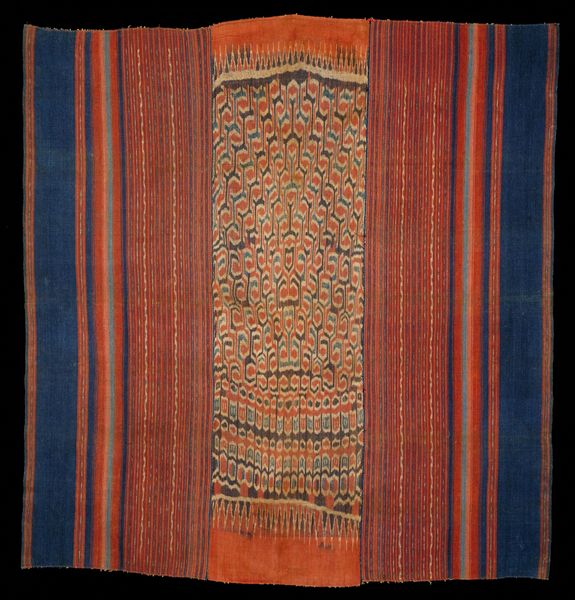
textile, cotton
#
pattern
#
textile
#
geometric pattern
#
abstract pattern
#
organic pattern
#
geometric
#
cotton
Dimensions: 61 x 82 in. (154.94 x 208.28 cm)
Copyright: Public Domain
Curator: This textile, called "Woman's Veil (Odhani)", is likely from the 20th century and currently resides here at the Minneapolis Institute of Art. It’s cotton, featuring a resist-dye technique. Editor: Immediately, I see a dark, almost somber field punctuated by these tiny, bright teardrop shapes, like stars in a night sky. The fiery border provides a visual containment to an otherwise infinite pattern. Curator: "Resist-dye" is key here. Imagine the meticulous labor involved—carefully binding sections of the cloth to prevent dye penetration, creating that repeating pattern. It speaks volumes about the cultural value placed on adornment and the skilled labor of women artisans. Editor: Absolutely. Formally, that repeated teardrop motif against the dark ground creates a mesmerizing optical effect, drawing the eye into the center, but also outwards, mirroring the veil’s dimensions and, perhaps, the face of the wearer? Curator: And the veil itself isn't merely decorative. It signals social status, religious affiliation, even regional identity. The choice of dyes, readily available natural pigments, also connects the object to a specific geographic location and trading networks. It's a testament to resourcefulness! Editor: Yes, the muted color palette reinforces this earthy connection. However, if we consider its aesthetic composition, the border becomes a structural framing device and isolates that contained field, emphasizing pattern. It transcends utilitarian value. Curator: To push back a bit, even the notion of “transcending” its utilitarian function speaks to a hierarchy. These aren't just objects of beauty; they're integral components of everyday life, tied to gendered roles and economic systems. The materiality informs those readings. Editor: Point taken, but can't it be both? The eye, through a language of line and shape, sees beauty even as the hands discern function. It is an elegant design with compelling chromatic contrast of bright against dim. Curator: Precisely, it's a confluence of purpose and artistry. Recognizing that intersection helps us appreciate not only the finished product but the labor and context informing its creation. Editor: I leave with a richer view by noticing details that can make visual elements emotionally resonant while considering its purpose within society. Curator: Likewise, I am newly attentive to both form and social history that weave the full complexity of this modest, yet rich, object.
Comments
No comments
Be the first to comment and join the conversation on the ultimate creative platform.

